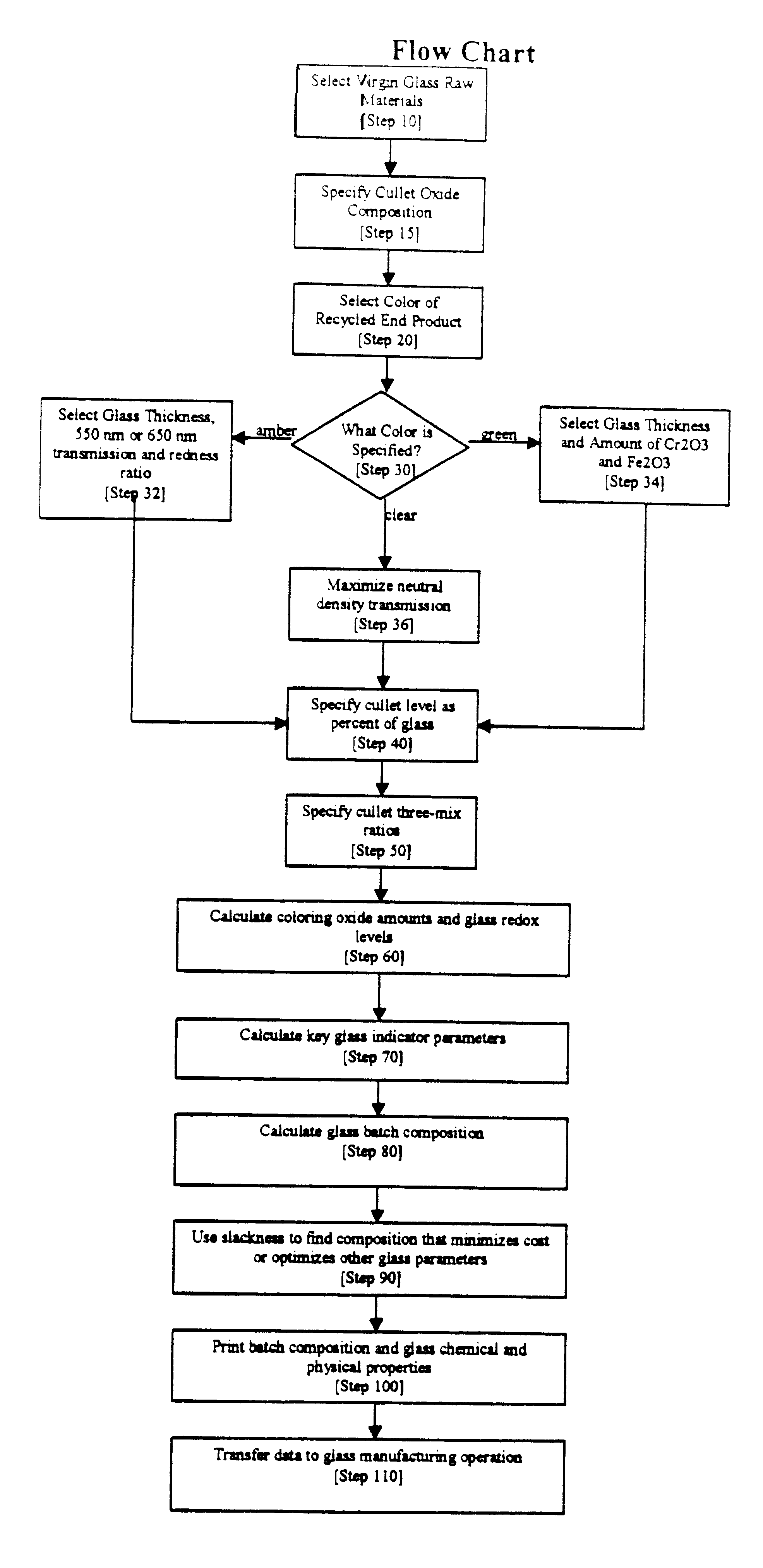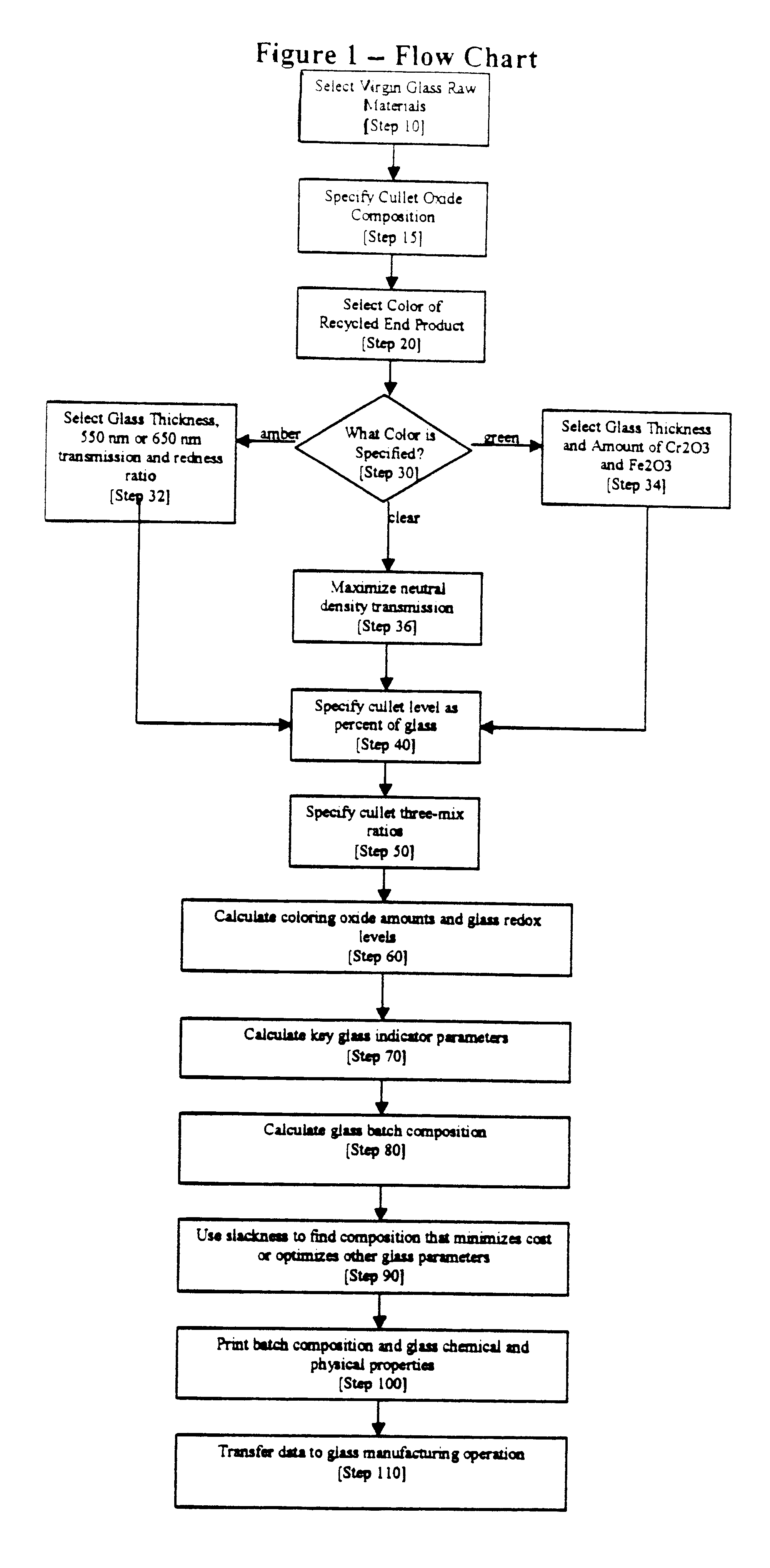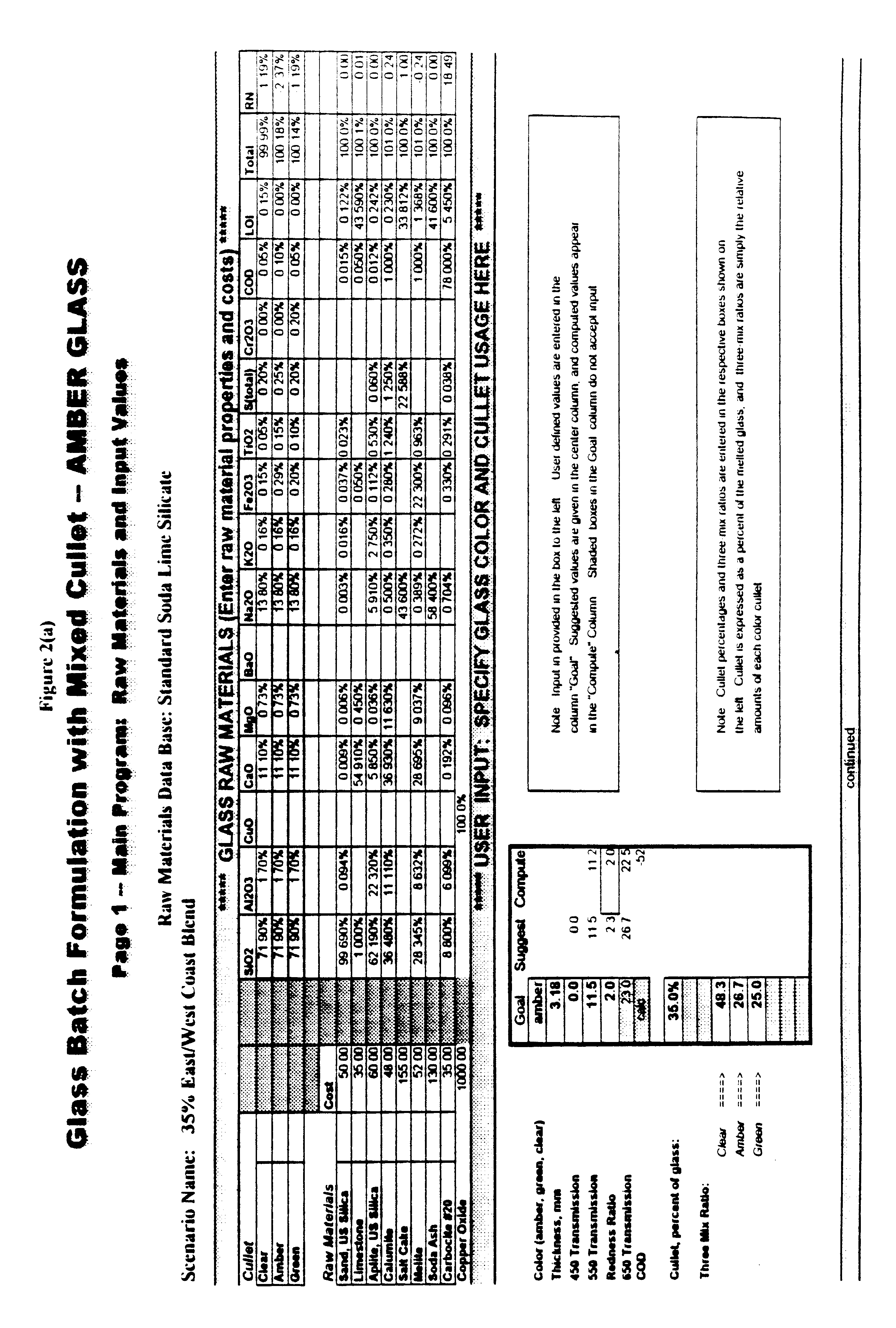Automated process for recycling batches of mixed color cullet into amber, green, or flint glass with selected properties
a technology of amber, green or flint glass and batch recycling, which is applied in the field of glass recycling, can solve the problems of inability to easily sort, large glass breakage, and ineffective separation and color sorting techniques of all glass
- Summary
- Abstract
- Description
- Claims
- Application Information
AI Technical Summary
Benefits of technology
Problems solved by technology
Method used
Image
Examples
example
Conversion of Mixed Broken Colored Cullet to Amber Colored Glass
A batch of mixed colored cullet was suitably converted to amber colored glass by the following method: First, about 2 lbs. of mixed colored cullet comprising about 56% by weight flint (colorless), 22.5% by weight amber, and 21.5% by weight green glass had about 0.3 to 0.45% of Fe.sub.2 O.sub.3 equivalent by weight (based on the weight of the molten cullet) of iron pyrite added thereto and intimately mixed together therewith. From about 0.015 to 0.07% by weight carbon (in the form of carbocite) was also added to the mixed colored cullet to achieve a redox number of approximately -55. These ingredients were melted to a molten state in a glass furnace at a temperature of about 2,600.degree. F to 2,700. The addition of carbon (reducing agent) controls the final amber color, i.e., as carbon content increases, the reddish-brown hue increases. The molten mixed color cullet with colorizing agents was then cooled and formed into...
PUM
| Property | Measurement | Unit |
|---|---|---|
| diameter | aaaaa | aaaaa |
| temperature | aaaaa | aaaaa |
| UV transmittance | aaaaa | aaaaa |
Abstract
Description
Claims
Application Information
 Login to View More
Login to View More - R&D
- Intellectual Property
- Life Sciences
- Materials
- Tech Scout
- Unparalleled Data Quality
- Higher Quality Content
- 60% Fewer Hallucinations
Browse by: Latest US Patents, China's latest patents, Technical Efficacy Thesaurus, Application Domain, Technology Topic, Popular Technical Reports.
© 2025 PatSnap. All rights reserved.Legal|Privacy policy|Modern Slavery Act Transparency Statement|Sitemap|About US| Contact US: help@patsnap.com



